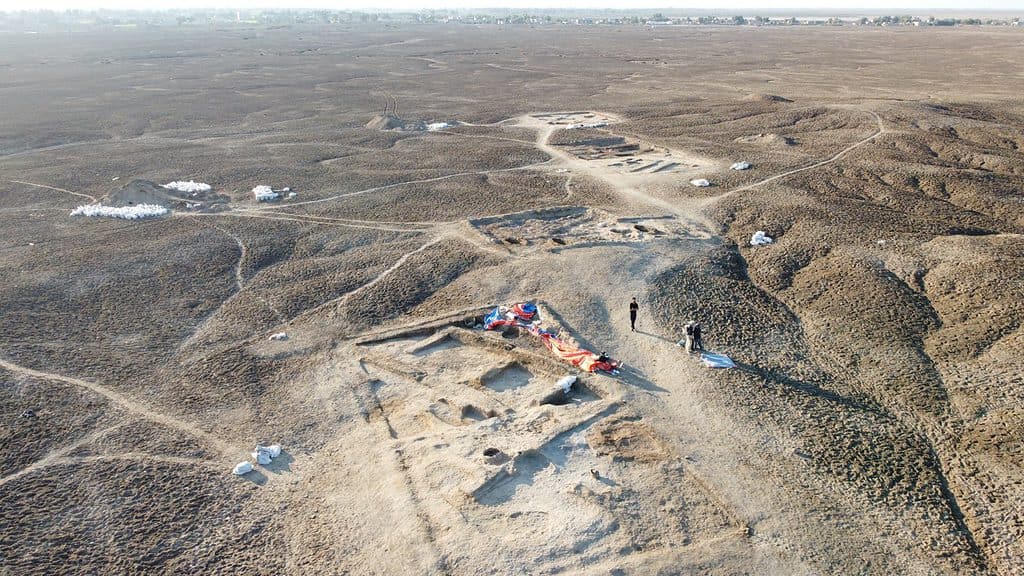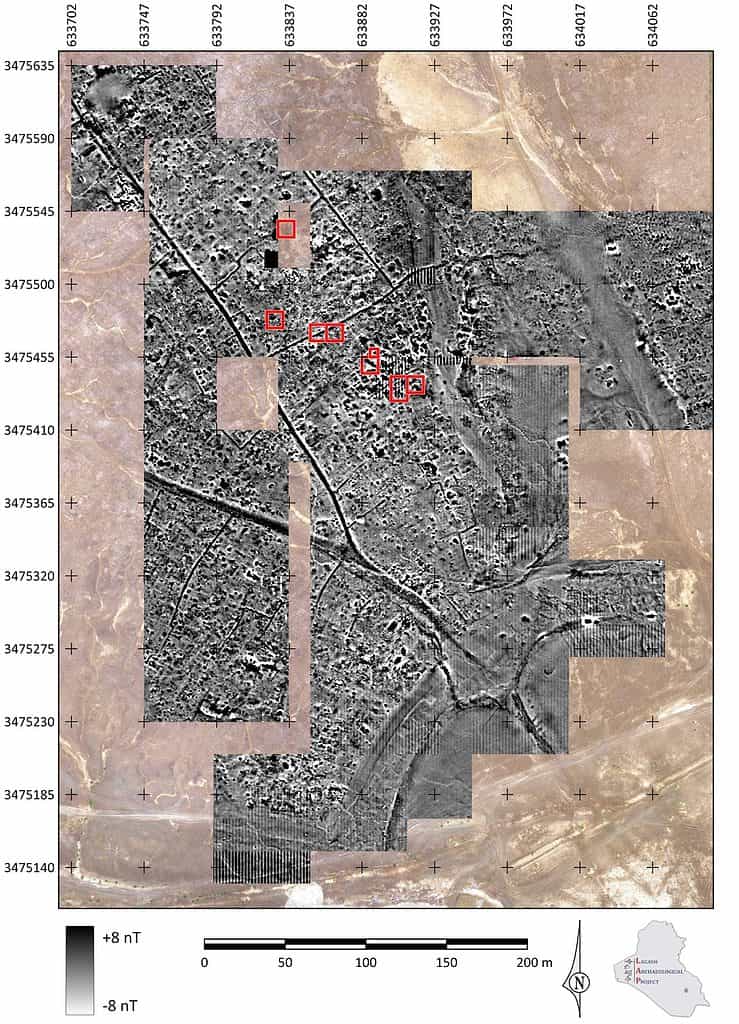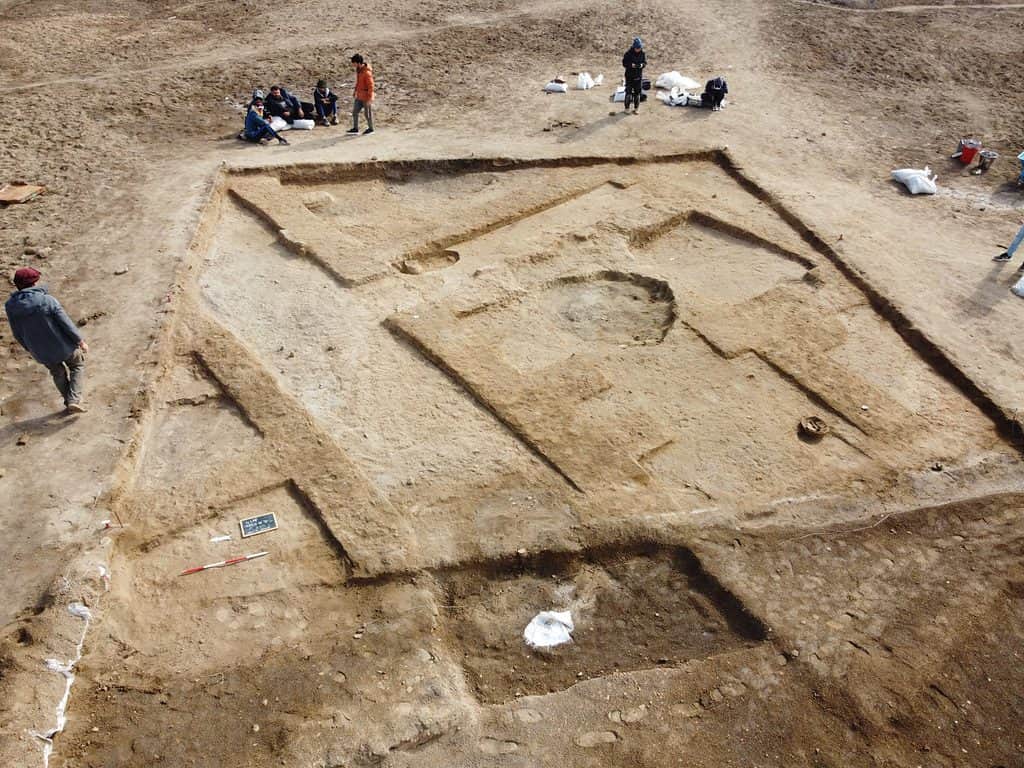
Some 5,000 years ago, the city of Lagash was one of the best places you could be in the world. Close to the junction between the Tigris and the Euphrates, it evolved and developed in an area we now consider a cradle of civilization. But many of its mysteries are now covered by the shroud of time. Holly Pittman from the University of Pennsylvania is one of the researchers working to uncover that shroud.
Lagash is one of the largest archaeological sites in the region, measuring roughly 3.5 kilometers north to south and 1.5 kilometers east to west. Previous surveys found that Lagash was a bit like Venice — it developed on four marsh islands, some of which were gated. Subsequent archaeological digs have resulted in the discovery of urban neighborhoods, tens of thousands of pottery sherds, and much more.
But modern archaeology is less about just finding things, and more about understanding how ancient people lived.
“It’s not like old-time archaeology in Iraq,” says Zaid Alrawi, a postdoc at the Penn Museum. “We’re not going after big mounds expecting to find an old temple. We use our techniques and then, based on scientific priority, go after what we think will yield important information to close knowledge gaps in the field.”
In Lagash, like in other archaeological sites, researchers are blending high-tech approaches with conventional digs and conservation. Drone photography and thermal imaging offer a birds-eye view of the site, and suggest preliminary points of interest. Then, you don’t just start digging randomly — you use another technique called magnetic surveying.
Archaeological objects and structures often have a magnetic contrast to their surroundings. By measuring the magnetic field, you can see some of the features of interest, and you start digging there. At more than 450 hectares, this is a very welcome technique in the archaeologists’ arsenal.
Then, digging happens, sometimes in the form of micro-stratigraphic sampling — a surgically precise type of excavation. Researchers also looked at sediment cores that hold clues to the ecological history over the centuries.

A tavern for the ages
Without having to dig even once, researchers can piece together a few things about the people of Lagash.
For instance, the magnetic surveys show a high density of kilns (which produce a distinctive signal). This indicates a lot of ceramic production at Lagash. Archaeologists believe these kilns survived for thousands of years, hardened by the repeated use of fire. But more detailed surveys suggest that many of the surrounding streets and buildings even predate the kilns.
“The site was of major political, economic, and religious importance. However, we also think that Lagash was a significant population center that had ready access to fertile land and people dedicated to intensive craft production. In that way the city might have been something like Trenton, as in ‘Trenton makes, the world takes,’ a capital city but also an important industrial one.”

But perhaps the most intriguing find was a large “tavern”. The building featured benches, an oven, and a type of clay refrigerator called a “zeer.” The zeer used an external clay layer lined with wet sand that contained an inner clay container within which the food or drinks were placed. The evaporation of the outer liquid draws heat from the inner pot and keeps the container cool while only requiring a source of water.
“It’s a public eating space dating to somewhere around 2700 BCE,” says Pittman, a professor in Penn’s History of Art department, curator of the Penn Museum’s Near East Section, and the Lagash project director. “It’s partially open air, partially kitchen area.”
Findings like these shed new light on the non-elite population of the time. Historically, archaeologists looked at the elite part of a population — the ones that built the big pyramids or temples, focusing less on the regular folks. But that’s starting to change.
Modern archaeological projects attempt a more holistic approach, rather than just a dig-and-see plan. They look at the archaeological remains as well as traces of ecology that they could find. The deltas and river changed their position in the past 5,000 years, and even the flow of the rivers was different: they were more fast-flowing and deeply incised than they are today.
“We’ll see deltaic evolution in this ecological cauldron across centuries,” Pittman says. “This is something people have theoretically modeled, but we’re getting actual dates of water regime changes, which will be revolutionary. It’s environmental science at the cutting edge.”
Since rivers and the delta were essential to the people of Lagash (as to most people in ancient Mesopotamia), understanding the evolution of the rivers and the delta (and by deduction, its proximity to the sea) is key to understanding what life was like in Lagash — particularly as Lagash itself seems to have been partially built on islands, and there is evidence that the locals often used boats to get around.
Ultimately, every bit of information helps contour the history of Lagash. There’s much to learn and progress is slow, but the rewards are coming in. A new golden age of archaeology is upon us.






